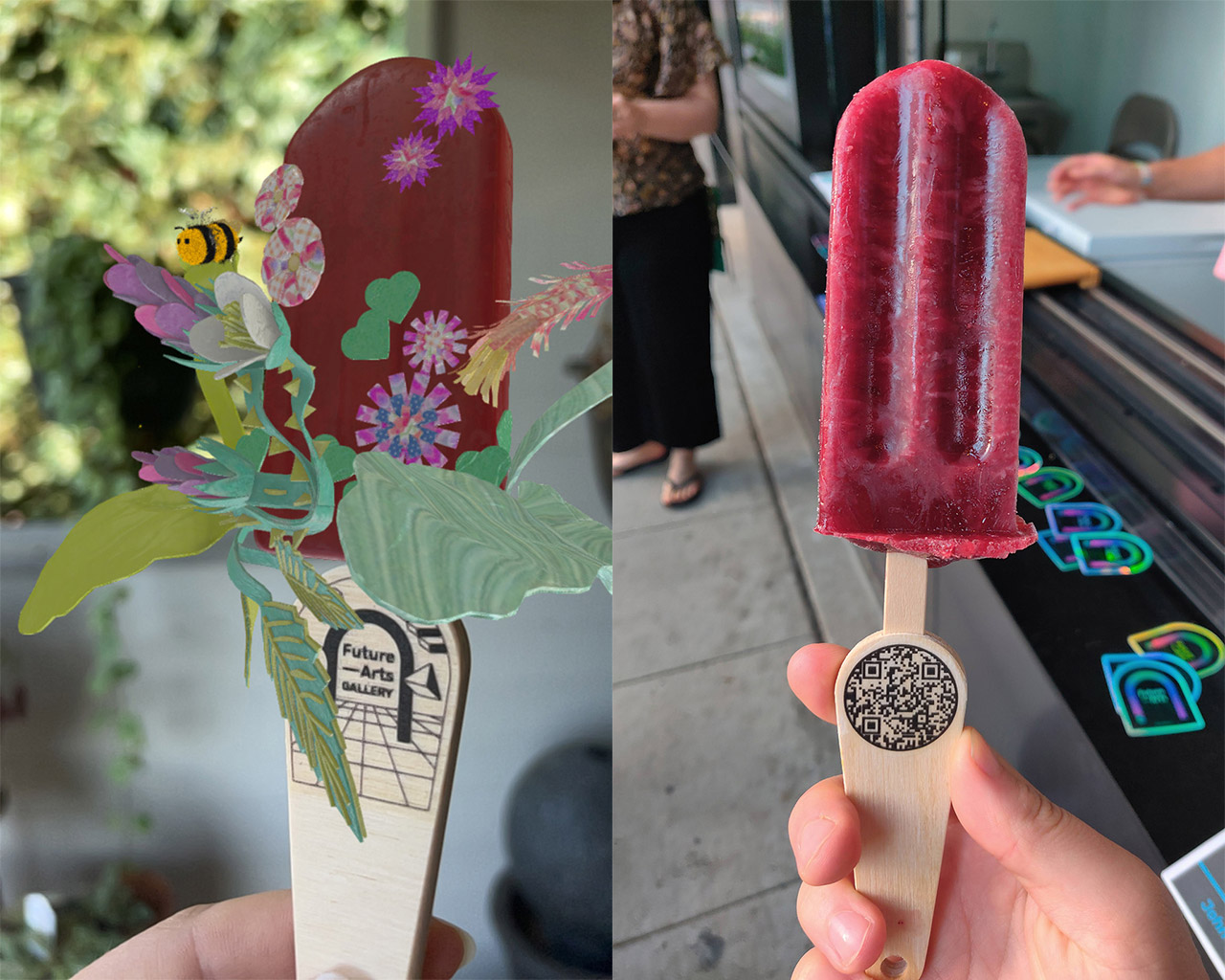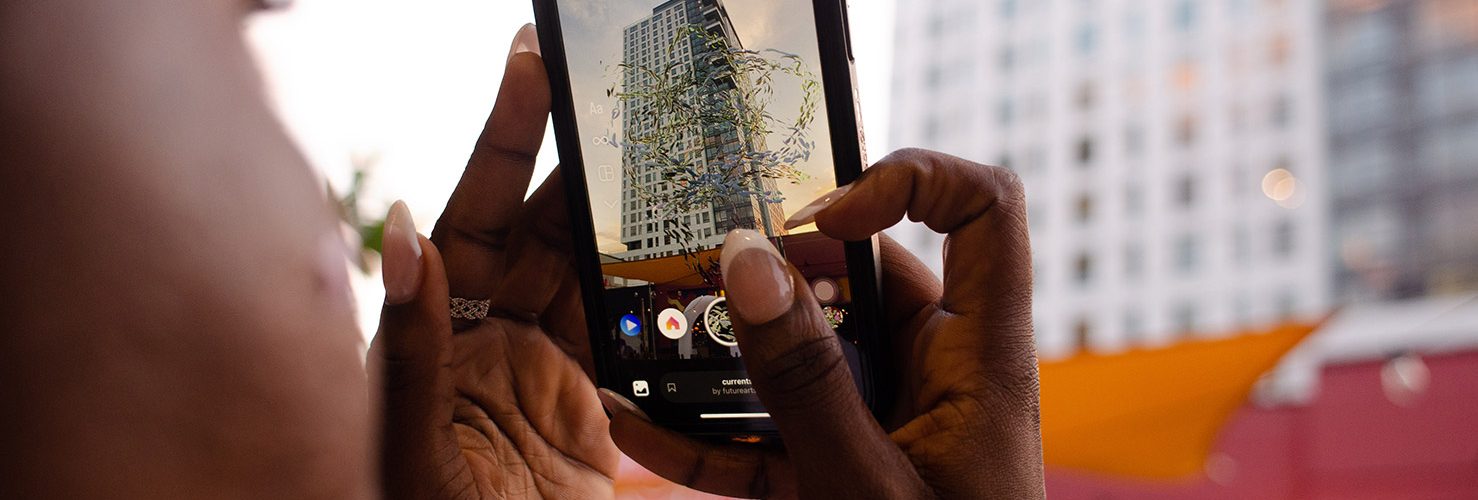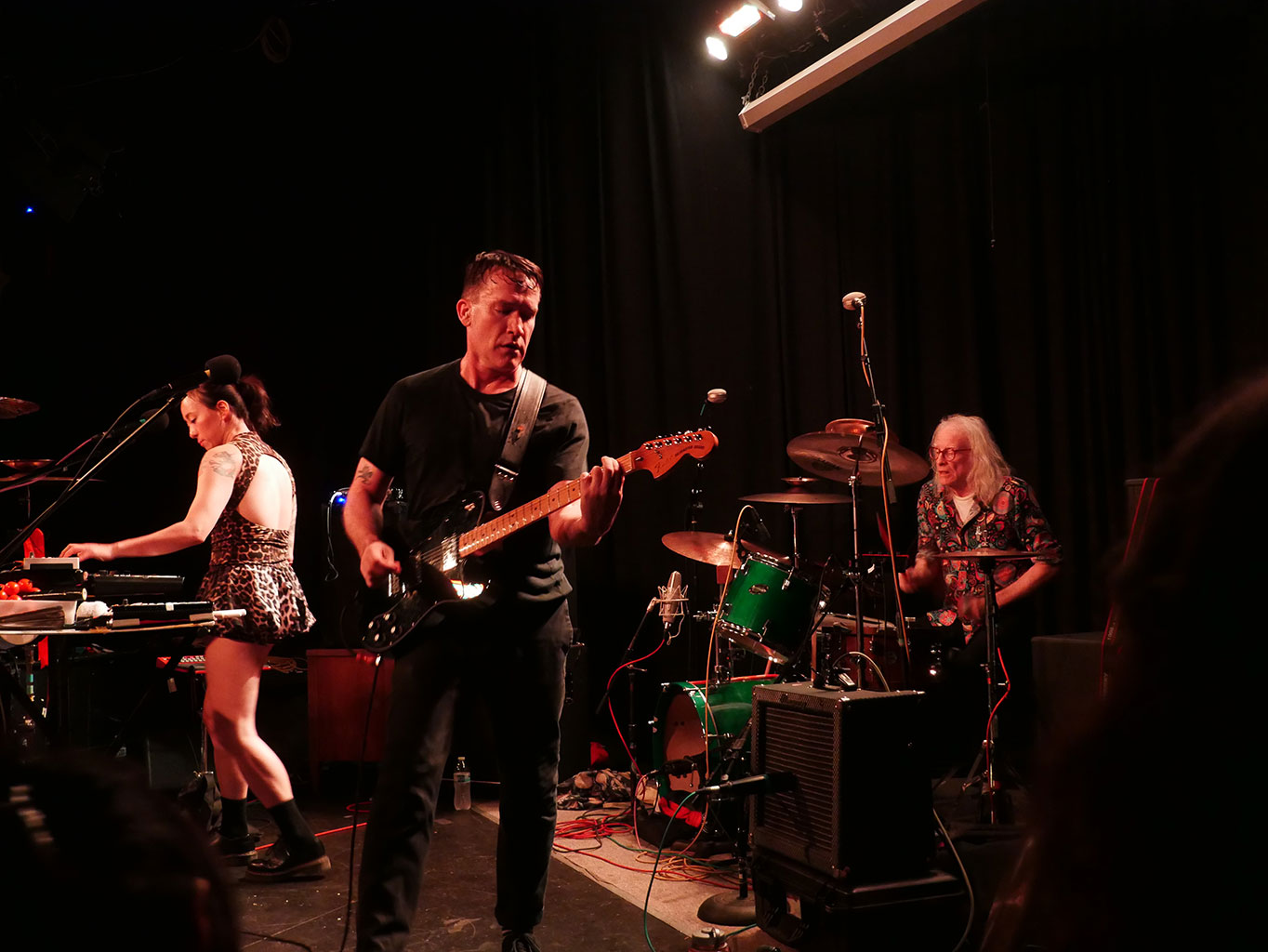Augmented Reality as Everyday Reality

Participant scans the QR code for “currents” by Alina Nazmeeva and Alex Kosnett, in order to activate AR functions through Instagram. (Credit: Yabsira Wolde)
In order to activate each art installation, participants were invited to scan QR codes placed on a variety of objects, from the sides of buildings to hand-held wooden popsicle sticks. Doing so would activate the AR filters through Instagram, superimposing digital imagery over the physical world, which participants could manipulate and play with in real-time. The popsicle stick, for example, was the piece entitled “AR+Pops: Home Here,” created by Portland-based artist Nina Vichayapai. A blackberry lemon balm (invasive species) popsicle was distributed for participants to consume; afterwards, the QR code could still be scanned, and a virtual, stylized popsicle populated the once-empty space.
As Future Arts’ co-founders, Bruk, Czoski, and Garcia have long been wanting to showcase the possibilities of technology-based art. While they recognize that AR is not new — its first iteration was developed at Harvard in 1968 — the medium is becoming more ubiquitous.
“People don’t even recognize that face filters are augmented reality,” says Czoski, who has experience in UX/UI design. “That’s fascinating to me. [AR has] just become part of the digital landscape that we take for granted, so what I loved about AUGMENT is that [the artists] used AR in so many different ways… and really showed… [the] depth of [AR] applications.”

Digital and edible versions of “AR+Pops: Home Here,” by Nina Vichayapai. (LEFT) Credit: Yuliya Bruk (RIGHT) Credit: Katharina Brinschwitz






